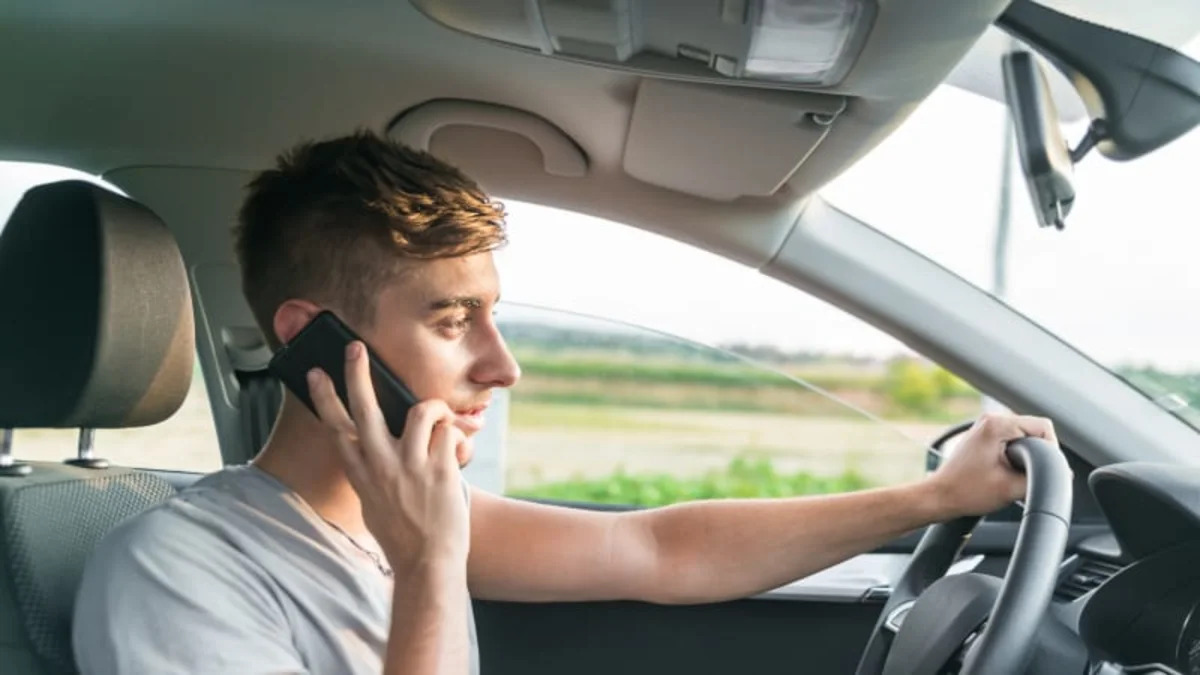How much is gas at that station? What does that street sign say? Check out those dance moves! The road comes with plenty of its own distractions and multi-tasking while driving adds yet another level of danger. Distracted driving is a main factor in accidents and a leading cause of death among young drivers, according to the Centers for Disease Control and Prevention. Use these safety tips on your next drive to ensure your hands stay on the wheel and your eyes and mind stay on the road.
Out of sight, out of mind
Put all distracting objects and subjects away when driving. Music may become a distraction if it's too loud or the content too stimulating, causing your mind to wander from the task at hand. Choose your audio entertainment wisely, keeping in mind that it's supposed to serve only as background noise. The road is your main focus.
Driving during a heated discussion or argument, or when you're stressed out or ill, is dangerous. Whether you're dealing with a passenger or someone on the phone, a moving vehicle is no place to handle important matters that will distract you mentally, physically or emotionally from your driving. Wait until you get home - or pull off the road into a safe location - if the issue at hand requires immediate attention.
Although most drivers hesitate to admit it, they use their Smartphones all too readily while behind the wheel. The simplest solution is to turn off or lower your ringer, lower or disable text alerts and/or leave your cell phone in the glove compartment or console before starting the car. If you have trouble parting from your phone when driving, download one of the many apps that prevent or incentivize you from texting or talking when behind the wheel. Available for both iOS and Android, safe-driving apps can do anything from block calls and texts, track miles in which you drove safely, send parents notifications when distracted driving is detected; they can even reward distraction-free driving.
Hit the road prepared
Grooming and eating should take place at home and not while driving, though these distractions are quite common. Plan your trip accordingly, giving yourself sufficient time to apply makeup, shave, dress or eat before you step into your car. Don't leave grooming supplies in your car for convenience and if you absolutely must eat in your vehicle (after ordering from a drive-thru, for example), pull over and park in a safe spot to enjoy your meal. Also, secure all loose objects so you're not caught off guard when they move or tempted to pick them up when they fall, recommends AAA.
Put your passengers to work
When providing a lift to passengers, ask them to do some of your heavy lifting. Let passengers handle the navigation system, the sound system and reply to calls and texts with a simple "I'm on the road" or "OMW" (which is short for "on my way") on your behalf. Whether you ask your co-pilots for help or not, don't engage in their texting and calls, as those can result in an indirect distraction.
Be a proactive passenger
If you happen to be a passenger rather than a driver, speak up if your driver is distracted. You're essentially placing your life in the driver's hands, so feel free to say something if someone is driving distracted and thereby endangering your safety. Ask if you can help them take a call or return a text, offer your navigation service so they don't have to look down at their map, or simply remind them that whatever the distraction might be, they can pull over or it can wait until you reach your destination.
Minor meddling
Keep tabs on teen drivers by installing systems that allow you to monitor phone use and overall driving habits. Track your teen via a plug-in device combined with an app or website. Parents can block phone usage, preset speed limits and receive alerts when drivers speed, brake excessively or exceed boundaries. There are simpler and less intrusive ways of preventing teens from driving distracted, such as educating them about the dangers. The internet offers sobering videos and statistics related to distracted teen driving. AAA and driving schools also offer education about the dangers.
Sources


Sign in to post
Please sign in to leave a comment.
Continue